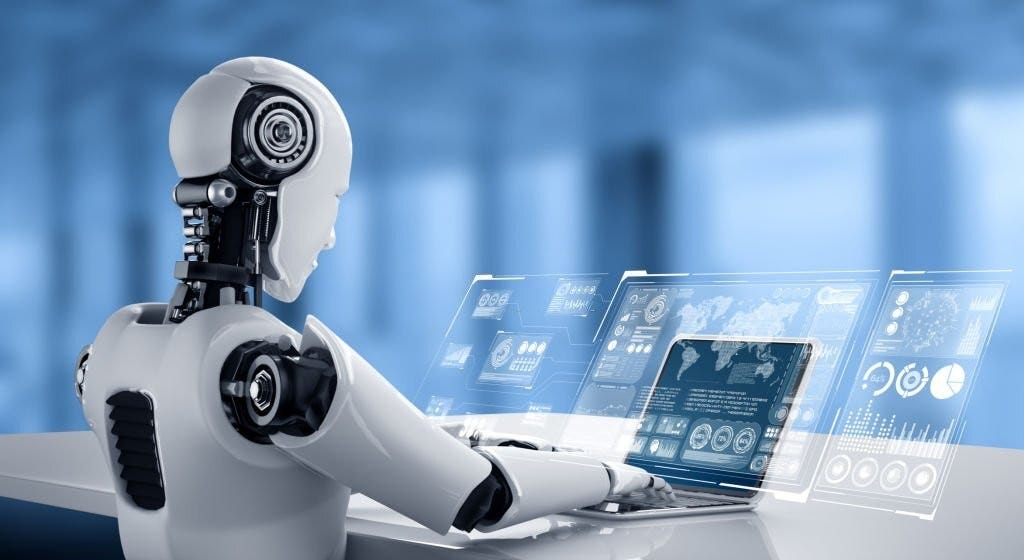1668A, 14th Main Rd, Sector 7, HSR Layout, Bengaluru, Karnataka 560102
+91 99459 30733 (9am - 6pm IST, Saturday - Sunday) (10am - 7pm IST, Tuesday - Friday)

Artificial Intelligence (AI) and robotics have long been intertwined, but recent advancements are accelerating their convergence, transforming industries, and reshaping our daily lives. The synergy between AI and robotics is creating a new era of smart machines capable of learning, adapting, and performing tasks with unprecedented efficiency. This blog explores how AI is revolutionizing robotics, the benefits and challenges of this integration, and what the future holds for smarter machines in a smarter world
1. Understanding the Synergy: AI Meets Robotics
At its core, robotics involves creating machines that can perform tasks autonomously or semi-autonomously. Traditional robots operate based on pre-programmed instructions and fixed algorithms. AI, on the other hand, allows machines to learn from data, make decisions, and improve over time without explicit reprogramming. When integrated, AI provides robots with cognitive capabilities, enabling them to perform complex tasks, make real-time decisions, and adapt to changing environments.
2. Enhanced Perception and Interaction
One of the most significant impacts of AI on robotics is enhanced perception. AI-powered robots can analyze sensory data from cameras, sensors, and microphones to interpret their surroundings more effectively. For instance, robots equipped with computer vision algorithms can recognize objects, identify obstacles, and navigate dynamic environments with greater accuracy.
Example: In warehouses, AI-driven robots use computer vision to pick and sort items, optimize storage, and navigate through cluttered spaces. These robots can adapt to new inventory or changes in layout without requiring manual reprogramming.
3. Improved Decision-Making and Learning
AI enables robots to learn from experience and improve their performance over time. Machine learning algorithms, a subset of AI, allow robots to refine their actions based on feedback and data. This capability is crucial in environments where tasks are unpredictable or require nuanced decision-making.
Example: Autonomous vehicles use machine learning to continuously improve their driving algorithms based on real-world data. They learn to navigate different traffic conditions, recognize various road signs, and handle unexpected obstacles, enhancing safety and efficiency.
4. Collaboration and Human-Robot Interaction
AI-powered robots are enhancing human-robot collaboration by understanding and responding to human cues more effectively. Natural language processing (NLP) and emotion recognition technologies enable robots to interact with people in more intuitive and empathetic ways.
Example: In healthcare settings, robots equipped with NLP can assist patients by understanding their needs and providing information or companionship. These robots can also adapt their responses based on the patient’s emotional state, improving the overall quality of care.
Moreover, AI enhances robots’ ability to work alongside humans safely and efficiently. Collaborative robots, or cobots, are designed to assist humans in tasks that require precision and repetition. These cobots are equipped with AI to monitor and adapt to human movements, ensuring they work harmoniously in shared workspaces. This ability to dynamically adjust to the presence and actions of human coworkers helps reduce the risk of accidents and increases overall productivity.
5. Advancements in Autonomous Systems
Autonomous systems benefit significantly from AI, allowing robots to operate independently in complex and dynamic environments. AI algorithms enable robots to perform tasks such as autonomous navigation, exploration, and maintenance with minimal human intervention.
Example: In agriculture, AI-driven drones can monitor crops, detect signs of disease, and even apply targeted treatments. These drones use AI to analyze aerial imagery and make real-time decisions about which areas require attention.
6. Challenges and Considerations
While the integration of AI and robotics offers numerous benefits, it also presents challenges and considerations:
Ethical Concerns: The use of AI in robotics raises ethical questions about decision-making in critical applications, such as autonomous weapons or surveillance robots.
Safety and Reliability: Ensuring the safety and reliability of AI-powered robots is crucial, especially in high-stakes environments like healthcare or transportation.
Job Displacement: The automation of tasks through AI and robotics may lead to job displacement, necessitating a focus on reskilling and workforce adaptation.
7. The Future of AI and Robotics
The future of AI and robotics is promising, with ongoing research and development pushing the boundaries of what’s possible. Key areas of future development include:
Enhanced Cognitive Abilities: Advances in AI will continue to enhance robots' cognitive abilities, enabling them to perform increasingly complex tasks and adapt to diverse environments.
Collaborative Robots: The rise of collaborative robots (cobots) will further integrate AI, allowing robots to work alongside humans in a wide range of industries, from manufacturing to healthcare.
Ethical AI: Developing ethical frameworks and regulations for AI in robotics will be essential to address concerns related to privacy, security, and decision-making.
A cobot, or collaborative robot, is a robot that is designed to work safely with humans in a shared workspace. Cobots are often used to perform repetitive tasks, freeing up humans to focus on other tasks. They are also designed to be more flexible, secure, and adaptable than traditional industrial robots.
Conclusion
The integration of AI and robotics is driving a revolution in technology, creating smarter machines capable of performing tasks with greater efficiency, adaptability, and intelligence. As AI continues to advance, the potential applications for robotics will expand, leading to transformative changes across various industries. Embracing these developments while addressing ethical and practical challenges will be key to harnessing the full potential of this exciting synergy and shaping a smarter world for the future.
By Fathima Safa M , Robotics Instructor at Roboprenr
About the author
Innovative robotics teacher specializing in hands-on projects and programming, fostering creativity and technical skills in students for future success.